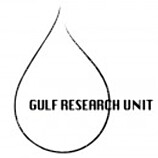
Archive: Gulf Research Blog
Blog articles from 2009 to 2012. The Gulf Research Unit is research programme based at the University of Oslo.
The Norwegian Oil Fund
Denne artikkelen er over ti år gammel og kan inneholde utdatert informasjon.
By Halvor Mehlum, Kalle Moene, and Ragnar Torvik.
The Norwegian Petroleum Fund was set up in 1990. The aim of the fund was to ensure a sustainable use of the income from the petroleum sector. The rationale for establishing the fund was that the return on financial assets was expected to be higher and less variable than the return on oil in the ground. The first payments into the fund were made in 1996, and from then on the fund has accumulated rapidly. At the present moment the fund is among the biggest sovereign wealth funds in the world. The total value of the fund is about 512 billion USD, which is somewhat more than the annual GDP.
All the proceeds from the petroleum sector to the state enter into the fund. This makes it transparent how much the petroleum sector contributes to public finances. The parliament each year then decides on how much should be transferred from the fund to the running government budget. In 2001 parliament decided on guidelines saying that the transfers out of the petroleum fund should normally equal the long run rate of return from the fund, stipulated at 4 percent. Thus the guidelines domestically referred to as the “decision rule”, implies a sustainable use where one does not tap into the wealth in the fund. In fact, the use of the rents increases as the size of the fund increases. Not only is the use sustainable, it implies a scaling up of the use of oil money with time (as oil in the ground does not count in the wealth). The use will follow a path such that the use of oil rents reaches its highest level when the oil era is over and no more oil cash flow enters the fund. From then on the entire oil wealth is transformed to financial wealth while the 4 percent rule is expected to provide a stable predictable flow for all future period.
In the initial years the transfer from the fund exceeded 4% of the fund, but in recent years this gap has narrowed and the transfers from the petroleum fund is now in accordance with the guidelines.
The day to day management of the fund is delegated from the Ministry of Finance to The Central Bank of Norway. The Ministry of Finance specifies how and where the fund is allowed to invest, and designs ethical guidelines while the Central Bank manages the fund.
The Norwegian petroleum fund ensures that (i) transparency in how much income the petroleum sector contributes, (ii) transparency in how much of the fund is used each year, (iii) the fund is integrated in the budget process (unlike for example in Alaska, where the fund operated independently from other government budgets), (iv) the management of the fund is based on professional economic decisions at the same time as satisfying ethical guidelines, but (v) still the fund is under democratic public control.
Interestingly, at the same day as the “decision rule” was announced, the monetary policy was shifted to an inflation targeting regime. One implication of the inflation targeting mandate of the Central Bank was that the interest rate had to be increased as soon as the Central Bank perceived that there was about to be pressure in the economy. Vocal voters, among them families with mortgages, would be very unhappy with interest hikes. As a result the policy makers soon learned that they would lose voters if there were reasons to blame them for generating excess pressure in the economy. In the public debate breaking the “decision rule” has been the yardstick when evaluating the soundness of fiscal policy.






